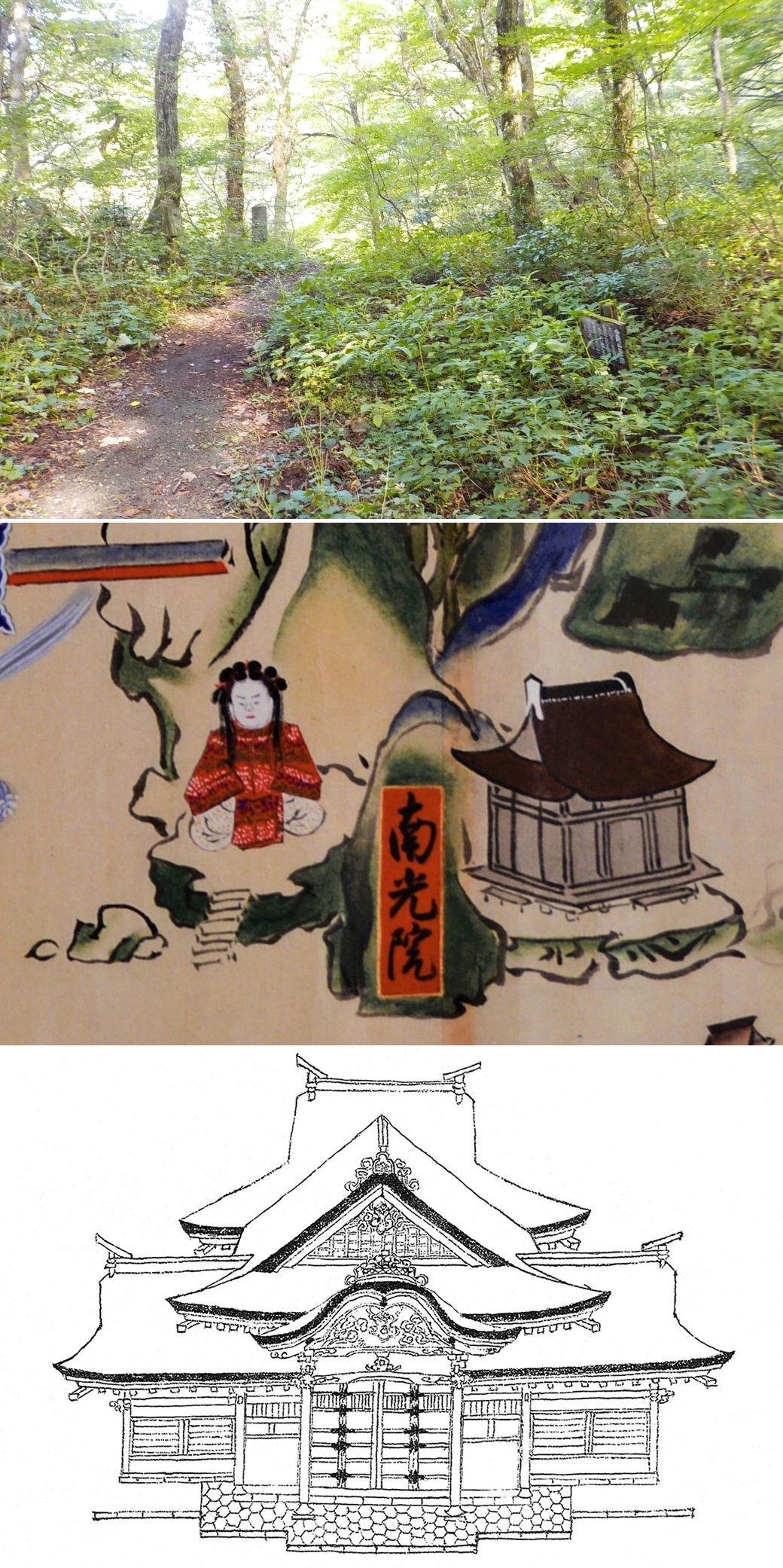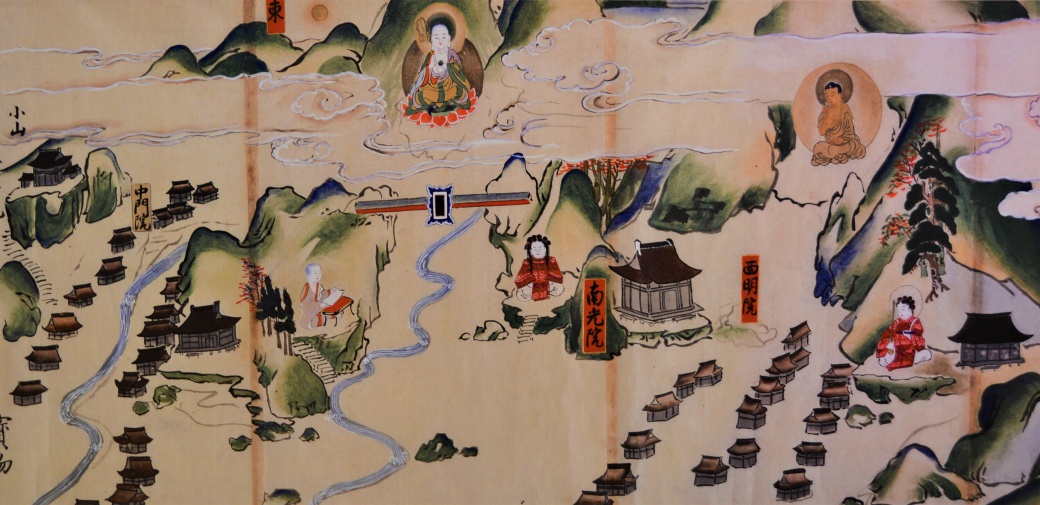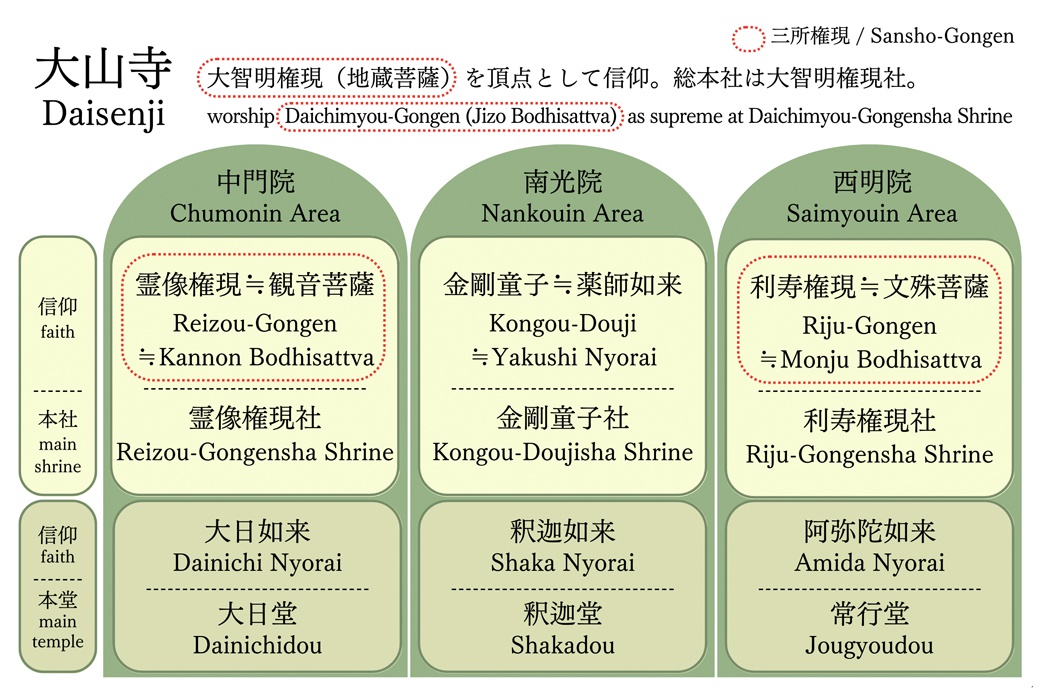

Ruins of Kongou-Douji Shrine
Ruins of Kongou-Douji Shrine

The main shrine belonged to Nankouin Temple of Daisenji. Kongou-Douji is the deity who protects pilgrims and is the manifestation of Yakushi Nyorai. The union of Kongou-Douji and Yakushi Nyorai is rarely seen in Japan. Though he is not one of the three main deities of Daisen, people regarded him as important as Riju-Gongen (the manifestation of Monju Bodhisattva) and Reizou-Gongen (the manifestation of Kannon Boddhisattva). Perhaps this is because he is a nyorai, which ranks higher than Boddhisattva.
The shrine was illustrated in a picture of 1797. It was damaged by a flood in 1829 and was rebuilt on the opposite side of the river the following year. However, as the faith fell into decline, both the building and the Buddhist statues were lost.
Shinto-Buddhist Syncretism and Daisenji Temple

Shinto-Buddhist syncretism is a unique form of belief in Japan that is based on the theory of “deities (kami) existing in Japan since ancient times are all temporary manifestations of Buddha.” This was how Buddhism took root in Japan. “Gongen” is the word for Buddhas that have the temporary appearance of kami.
“One day, five ponds were formed on the summit of Mt. Daisen, and Monju Bodhisattva, Kannon Bodhisattva, and Jizo Bodhisattva appeared from the pond in the center. After that, Monju Bodhisattva headed west, Kannon Bodhisattva traveled east, and Jizo Bodhisattva remained in the center. They are called Sansho Gongen collectively."
“The Daisen Sansho Gongen” was the center of worship at Daisenji Temple. Monju Bodhisattva is the manifestation of “Riju-Gongen”, Kannon Boddhisattva is “Reizou-Gongen”, and Jizo Boddhisattva is “the Daichimyou-Gongen.” For this reason, people used to call the main building of Daisenji “the Daichimyou-Gongen Shrine”.
Daisenji Consisted of Three Temple Areas

Many small temples were clustered in Daisen and belonged to one of the three areas: Chumonin, Nankouin, and Saimyouin. Each of the three areas had its own unique beliefs: Chumonin was devoted to Dainichi Nyorai and Reizou-Gongen (the manifestation of Kannon Bodhisattva); Nankouin was devoted to Shakamuni Buddha and Kongou-Douji (the manifestation of Yakushi Nyorai); and Saimyouin was devoted to Amida Nyorai and Riju-Gongen (the manifestation of Monju Bodhisattva). Despite repeated disputes, they united as “Daisenji” by the early 13th Century, having agreed on the faith in the Daichimyou-Gongen (the manifestation of Jizo Bodhisattva) as supreme.

